How do you treat phlebitis. Thrombophlebitis (Superficial and Migratory): Symptoms, Causes, Treatment
What are the types of thrombophlebitis? What are the symptoms of thrombophlebitis? What causes thrombophlebitis? Who is at risk of thrombophlebitis? How is thrombophlebitis diagnosed? How is thrombophlebitis treated? What are the complications of thrombophlebitis? Can thrombophlebitis be prevented?
Types of Thrombophlebitis
Thrombophlebitis is a condition where a blood clot forms in one of the veins, slowing the blood flow. There are two main types of thrombophlebitis:
Superficial thrombophlebitis: This occurs in the veins just below the skin’s surface. It is usually not as dangerous as deep vein thrombosis (DVT), as the clot typically does not travel to the lungs.
Deep vein thrombosis (DVT): This occurs in the deeper veins, often in the leg or thigh. A clot from a DVT can break off and travel to the lungs, causing a potentially life-threatening pulmonary embolism.
Migratory thrombophlebitis, also called Trousseau’s syndrome or thrombophlebitis migrans, is when the blood clot moves to different parts of the body, often from one leg to the other. This is often associated with underlying cancer, particularly of the pancreas or lung.
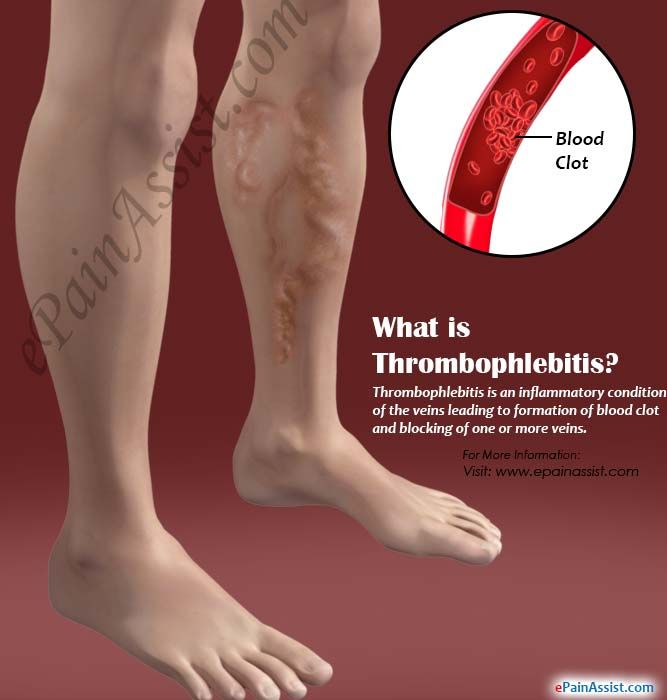
Symptoms of Thrombophlebitis
The main symptoms of thrombophlebitis include:
- Red, swollen, and irritated skin around the affected vein
- Pain or tenderness that worsens with pressure on the affected area
- A swollen vein that feels like a hard “cord” under the skin
- Pain when flexing the ankle (though thrombophlebitis can occur in other areas)
- A swollen foot or ankle
Seek immediate medical attention if you experience symptoms like one leg being warmer than the other, the affected limb becoming pale or cold, sudden coughing, sharp chest pain, rapid breathing, or severe lightheadedness, as these could indicate a more serious complication.
Causes of Thrombophlebitis
Thrombophlebitis is usually caused by a blood clot forming in the vein, which can happen for several reasons:
- Prolonged immobility, such as after a major illness, surgery, or long periods of sitting
- Varicose veins, which cause blood to pool in the veins instead of flowing properly
- Poor circulation in the legs
- Certain medical conditions like cancer, use of estrogen hormones, obesity, and smoking
- A family or personal history of blood clots
- Placement of catheters in central veins of the arm or leg
- Hypercoagulable state (increased tendency for blood clotting)
- Trauma or immobilization
Who is at Risk of Thrombophlebitis?
Several factors can increase the risk of developing thrombophlebitis:
- Being over the age of 60
- Having a personal or family history of blood clots
- Using estrogen-based birth control or hormone replacement therapy
- Being obese
- Smoking
- Having certain types of cancer
- Being immobilized for long periods, such as after surgery or during hospitalization
- Having a central venous catheter placed
Diagnosis of Thrombophlebitis
To diagnose thrombophlebitis, the doctor will:
- Ask about your symptoms and medical history
- Perform a physical exam, looking for signs of inflammation and clots in the veins
- May order blood tests to check for clotting factors
- May use imaging tests like duplex ultrasound to visualize the blood vessels and clots
A duplex ultrasound is a painless test that uses sound waves to create images of the blood vessels and any clots present.
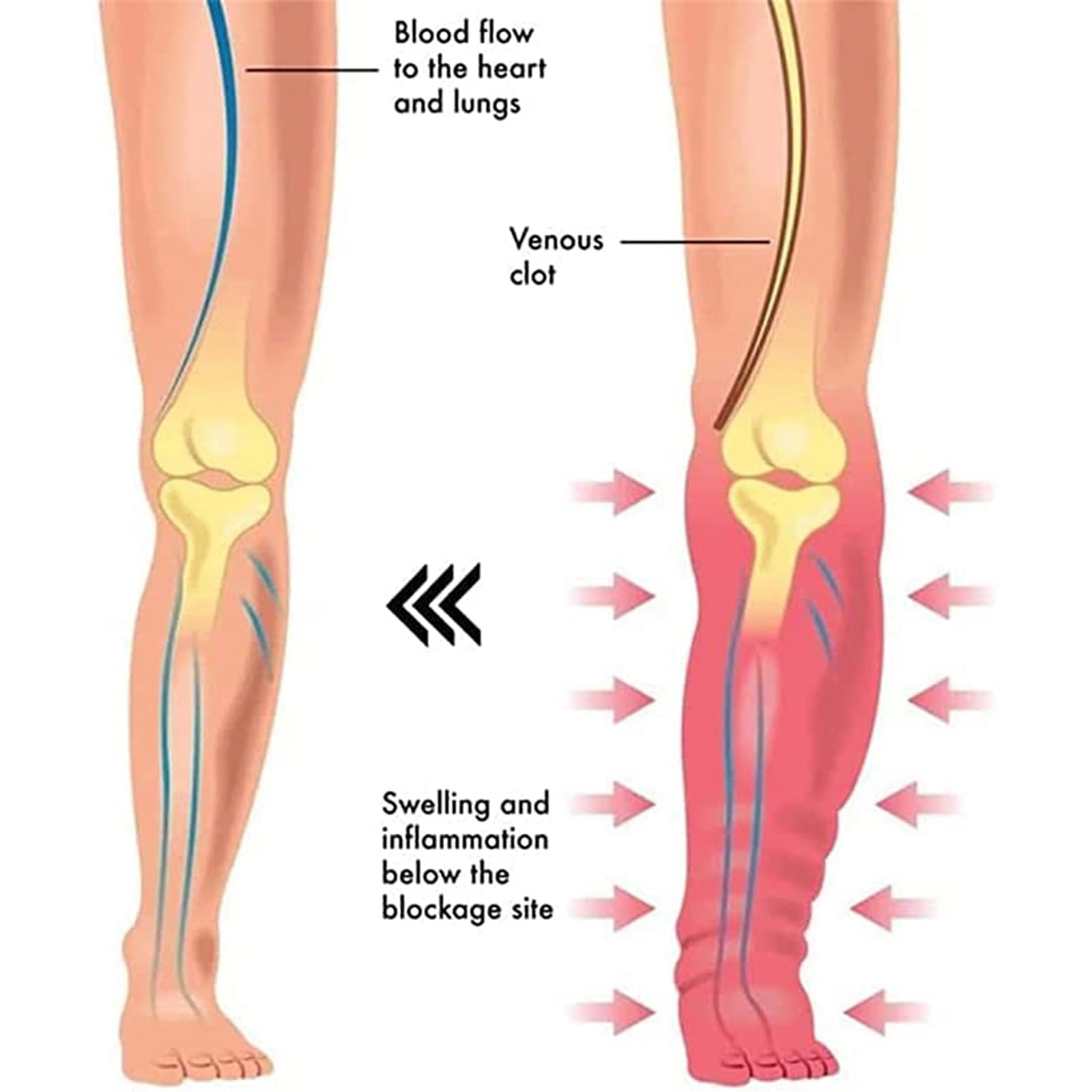
Treatment of Thrombophlebitis
The treatment for thrombophlebitis depends on the type and severity of the condition:
Superficial thrombophlebitis is usually treated with pain medication, warm compresses, and possibly blood thinners if the clot is extensive. Deep vein thrombosis (DVT) requires more aggressive treatment with blood thinners to prevent the clot from traveling to the lungs.
For migratory thrombophlebitis associated with cancer, the underlying cancer must also be treated. Complications like pulmonary embolism are medical emergencies requiring immediate treatment.
Complications and Prevention of Thrombophlebitis
Potential complications of thrombophlebitis include:
- Extension of the clot to deeper veins (DVT)
- Pulmonary embolism if the clot breaks off and travels to the lungs
- Chronic venous insufficiency and varicose veins from damaged veins
To help prevent thrombophlebitis, it’s important to maintain good circulation by staying active, avoiding prolonged sitting or bed rest, and managing any underlying medical conditions that increase clotting risk. Compression stockings may also be recommended.
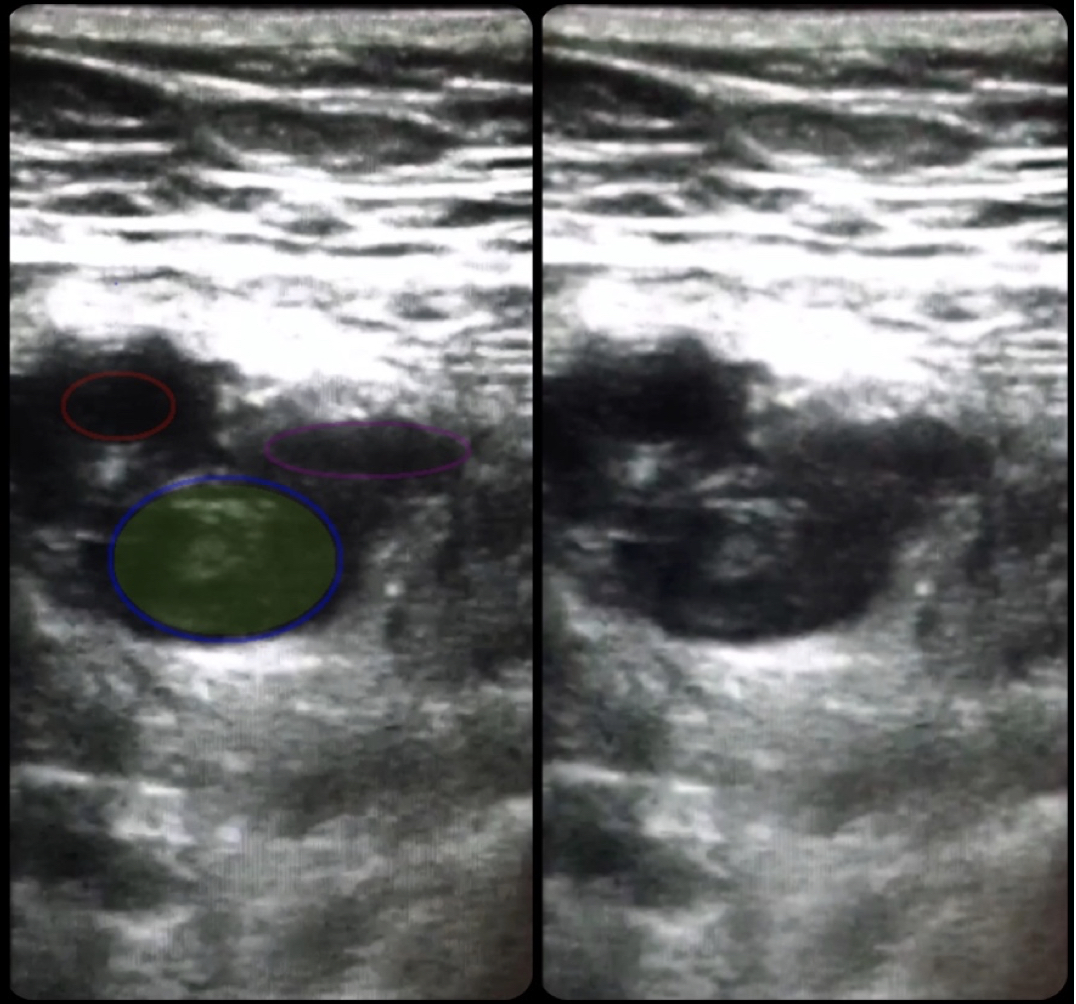
If you have any concerning symptoms or risk factors for thrombophlebitis, be sure to discuss them with your healthcare provider. Prompt diagnosis and appropriate treatment are key to managing this condition and avoiding potentially serious complications.
Thrombophlebitis (Superficial and Migratory): Symptoms, Causes, Treatment
Written by WebMD Editorial Contributors
- What Are the Types of Thrombophlebitis?
- What Are the Symptoms of Thrombophlebitis?
- What Causes It?
- Who’s at Risk?
- How Is It Diagnosed?
- How Is Thrombophlebitis Treated?
- Complications
- Can It Be Prevented?
- More
Thrombophlebitis is when a blood clot forms in one of your veins and slows the blood flow in the vein. It most often affects your legs, but it can also happen in your arms or other veins in your body. Thrombophlebitis can happen right under the skin or deeper in your leg or arm.
“Thrombo” means clot, and “phlebitis” means inflammation in a vein. That’s the swelling and irritation that happen after an injury.
Phlebitis and thrombosis of the lower extremity superficial veins. You might also hear this called superficial phlebitis or superficial thrombophlebitis. It’s a blood clot in the vein just below the surface of your skin. It doesn’t usually get to your lungs, but superficial thrombophlebitis can be painful, and you may need treatment.
It’s a blood clot in the vein just below the surface of your skin. It doesn’t usually get to your lungs, but superficial thrombophlebitis can be painful, and you may need treatment.
Deep vein thrombosis (DVT). It’s a blood clot in a vein deep in your body that can occur with or without phebitis. Most happen in your lower leg or thigh, but they may happen in other parts of your body. A clot like this can get loose and travel through your bloodstream. If it gets to an artery in your lungs and blocks blood flow, it’s called a pulmonary embolism, which can damage your lungs and cause death. This is what makes DVTs are more dangerous than superficial vein thrombosis. DVTs require blood thinners.
Migratory thrombophlebitis. Also called Trousseau’s syndrome or thrombophlebitis migrans, it’s when the clot comes back in a different part of your body. It often goes from one leg to the other. It’s often linked to cancer, especially of the pancreas or lung.
If the blood flow to one of your veins is slowed because of a clot, you might have:
- Red, swollen, and irritated skin around the affected area
- Pain or tenderness that gets worse when you put pressure on the affected area
- A swollen vein that feels like a tough “cord” under your skin
- Pain when flexing your ankle (keep in mind that thrombophlebitis can happen in other parts of the body, but it usually happens in the legs)
- A swollen foot or ankle
If you have any of these symptoms, see your doctor right away.
Call 911 if you have leg pain or swelling or any of the following symptoms:
- One leg seems warmer than the other or is swollen, red, painful, or irritated
- The affected limb becomes pale or cold, or you start feeling chills and fever
- Sudden coughing, which may bring up blood
- Sharp chest pain or chest tightness
- Pain in your shoulder, arm, back, or jaw
- Rapid breathing or shortness of breath
- Pain when you breathe
- Severe lightheadedness
- Fast heartbeat
First, a blood clot forms. This can be due to several things. Most often, it’s caused by blood not moving the way it should through the leg veins. This can happen because of:
This can be due to several things. Most often, it’s caused by blood not moving the way it should through the leg veins. This can happen because of:
Long-term bed rest, such as after a major illness or surgery.
Sitting for a long time, as you would in a car, on a plane, or in some other place where you can’t stretch your legs.
Varicose veins. They cause your blood vessels to stretch too much. This allows blood to pool in the vessel instead of flowing straight through in one direction. This can lead to blood clots.
Anyone who has poor circulation in their legs may be more likely to have this condition. This could include women who may get thrombophlebitis during or after pregnancy. People who’ve been kept in the hospital on an IV are at risk, too. Hospital staffers try to lower this risk by changing the spots where IV lines are placed in the body.
Other things that raise your chances of having this condition include:
- Certain cancers
- Use of the hormone estrogen for birth control or hormone replacement
- Being over age 60
- Obesity
- Smoking
- A family or personal history of blood clots
- Catheters placed in central veins of the arm or leg
- Anyone who has a hypercoagulable state
- if you have had trauma
- Are immoboloized
- Have had surgery and are immobolized
The doctor will start by asking about your symptoms and taking a look at veins near the surface of your skin. They’ll do a physical exam. They may also do blood and circulation tests or imaging exams like a CT scan or MRI. They might also do tests like:
They’ll do a physical exam. They may also do blood and circulation tests or imaging exams like a CT scan or MRI. They might also do tests like:
Duplex ultrasound. This painless imaging test doesn’t have radiation the way an X-ray does. It uses sound waves to create a picture of your legs. The doctor spreads warm gel on your skin and then rubs a wand over the area where they think the clot is. The wand sends sound waves into your body. The echoes go to a computer, which makes pictures of your blood vessels and sometimes the blood clots.
A radiologist will review the images and send a report to your primary care doctor or to the doctor who requested the ultrasound.
D-dimer test. This is a blood test to look for a protein, called D-dimer, that’s made when a blood clot breaks down. Your doctor will order this test if they think you’ve got a dangerous clot, like a deep vein thrombosis (DVT) or pulmonary embolism (PE).
If your D-dimer level is high, it could mean a clot is breaking down.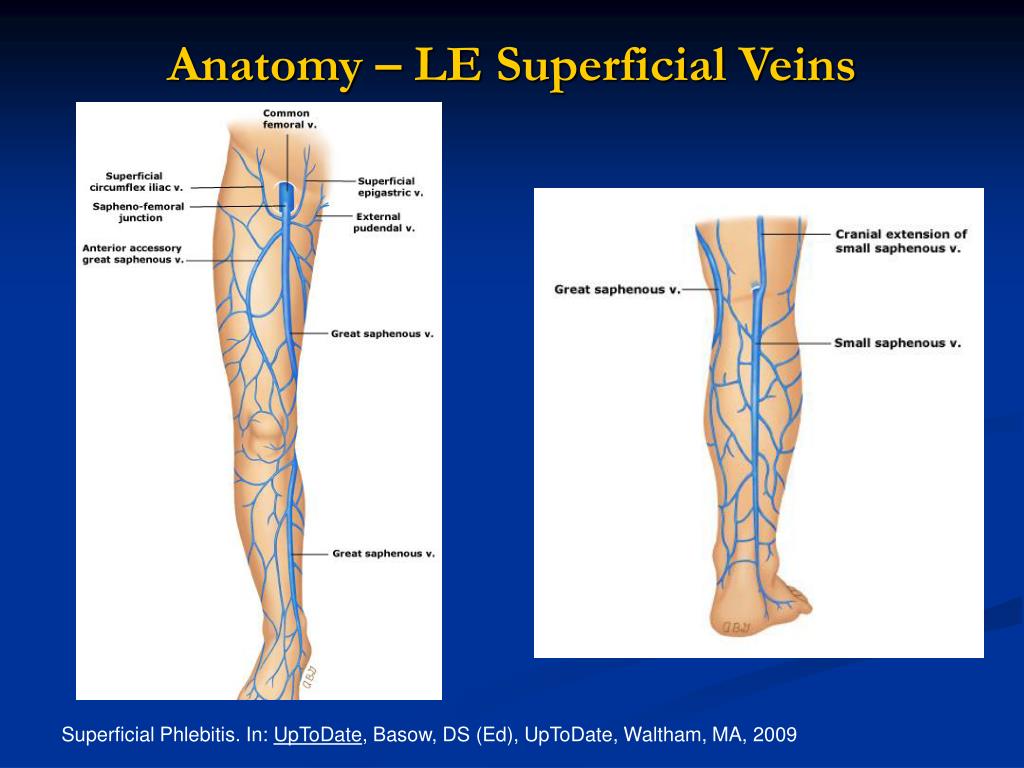 If your results are negative, it means you probably don’t have a clot. But even if the results are positive, that still doesn’t mean you have a clot. Your doctor will need to order imaging studies to visualize the clot.
If your results are negative, it means you probably don’t have a clot. But even if the results are positive, that still doesn’t mean you have a clot. Your doctor will need to order imaging studies to visualize the clot.
MR Venography and CT Venography. If the results of your ultrasound aren’t clear, your doctor will use these imaging studies to confirm the presence of a clot. They will inject a dye into your vein and the image will show up on an X-ray. Possible side effects include pain and an allergic reaction to the dye.
MR angiography (MRA). This test takes a detailed picture of your veins using a large MRI machine. Your doctor will inject a special dye into your veins. It’ll allow them to see your blood vessels. They’ll also be able to see anything that looks unusual, like plaque buildup in your arteries.
CT scan. If your doctor is concerned that a deep vein clot has moved to your lung, they might order this test to get a better image.
Most cases of thrombophlebitis that happen in the shallow veins begin to go away by themselves in a week or two. But on rare occasions, these blocked veins can lead to infection. They can even cause tissue damage from the loss of healthy circulation.
If you need treatment, your doctor will probably give you something to relieve swelling and pain. They may recommend that you keep your leg raised or take over-the-counter aspirin or ibuprofen. They might also suggest you apply heat to the affected leg or arm for 15 to 30 minutes, two to three times daily.
Antibiotics. You might get them if poor circulation leads to an infection.
Blood thinners. These medications are usually reserved for thrombosis with a high risk of embolization to the lungs or brain. Deep vein thrombosis requires anticoagulation for this reason. You can give yourself heparin and enoxaparin (Lovenox) at home through shots under your skin. They help keep the clot from getting bigger. You may also have to take an oral drug like warfarin (Coumadin) for several months or longer to keep clots from coming back. Your doctor will give you regular blood tests to make sure the meds are working.
You may also have to take an oral drug like warfarin (Coumadin) for several months or longer to keep clots from coming back. Your doctor will give you regular blood tests to make sure the meds are working.
Blood thinners, like direct thrombin inhibitors and factor Xa inhibitors, are also available. But doctors don’t normally recommend them as the main treatment for thrombophlebitis because they cost more and may cause uncontrollable bleeding. They include apixaban (Eliquis), dabigatran (Pradaxa), edoxaban (Savaysa), and rivaroxaban (Xarelto).
Compression stockings. After the clot has resolved and you are on blood thinners, you may be advised to wear a compression stocking on the leg that was affected. This reduces the risk of post-thrombotic or post-phlebitic syndrome.
They decrease swelling of the leg which decreases pressure in the veins and reduces risk of varicose veins..
Filter. This has much more limited use than suggested here. An IVC filter is used on people who can not safely take anticoagulation and are at risk for DVTs which put the person at risk for pulmonary embolism. The vena cava is the main vein in your abdomen. The IVC filter prevents clots in your legs from breaking loose and traveling to your lungs. You’ll need surgery for this treatment. They are ideally removed within 3 months after placement.
An IVC filter is used on people who can not safely take anticoagulation and are at risk for DVTs which put the person at risk for pulmonary embolism. The vena cava is the main vein in your abdomen. The IVC filter prevents clots in your legs from breaking loose and traveling to your lungs. You’ll need surgery for this treatment. They are ideally removed within 3 months after placement.
Varicose vein stripping. This can help with veins that cause pain or recurring thrombophlebitis. The doctor makes small cuts to remove a long vein. It doesn’t affect circulation. Veins deeper down can handle more blood.
They’re rare, but you could have:
Pulmonary embolism. If the clot breaks loose, it could move to your lungs and block an artery. This condition can be life-threatening.
Postphlebitic syndrome. It can show up months or years after DVT. It often causes pain, swelling, and a feeling of heaviness in the affected leg or arm.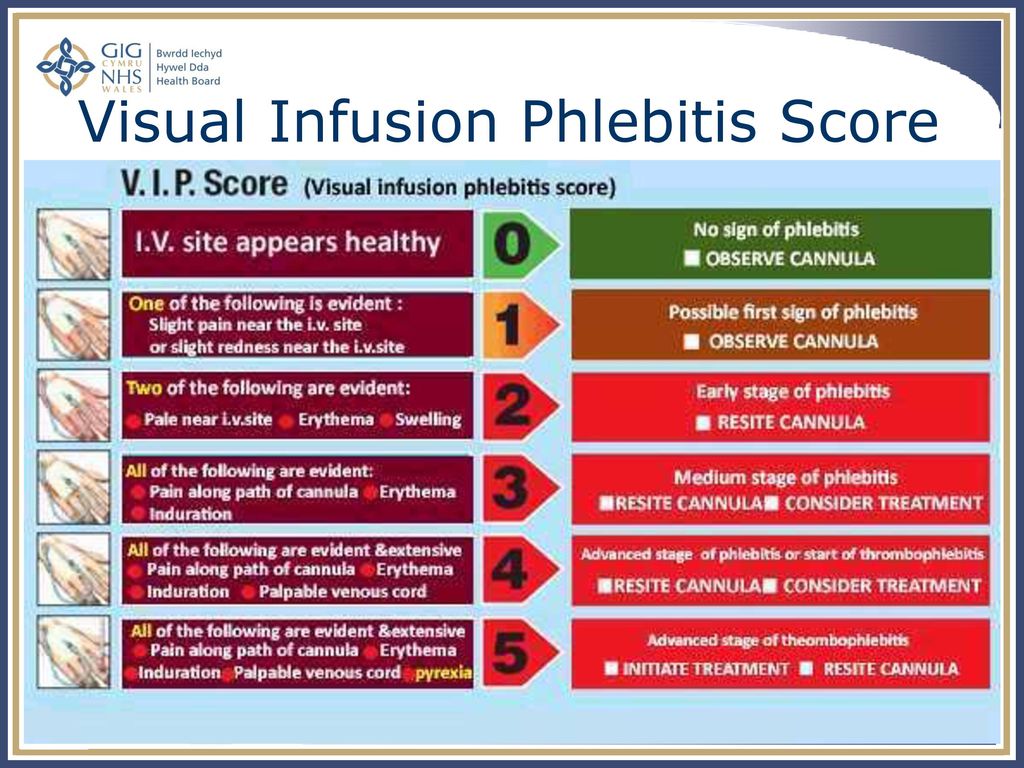 You might hear it called post-thrombotic syndrome, venous stasis syndrome, or chronic venous insufficiency.
You might hear it called post-thrombotic syndrome, venous stasis syndrome, or chronic venous insufficiency.
Sitting on long drives or flights is a major cause of blood clots. To prevent them:
- Walk around. Get up for a stroll every hour.
- Keep moving. Don’t just sit there. Flex your ankles. Or press your feet against the floor or footrest about 10 times an hour.
- Keep it loose. Don’t wear tight clothing.
- Stay hydrated. Drink plenty of fluids, but avoid alcohol.
- Blood thinners. If you have had a clot previously or are at high risk for one, blood thinners may be prescribed prophylactically.
Top Picks
Benefits, Risks, and How to Use Them
Written by WebMD Editorial Contributors
- Types of Blood Thinners
- How Blood Thinners Work
- Who Needs Blood Thinners?
- Side Effects of Blood Thinners
- How to Manage Side Effects
- When to Call Your Doctor
- Blood Thinners and Pregnancy
- More
Blood thinners are medicines that help blood flow smoothly through your veins and arteries.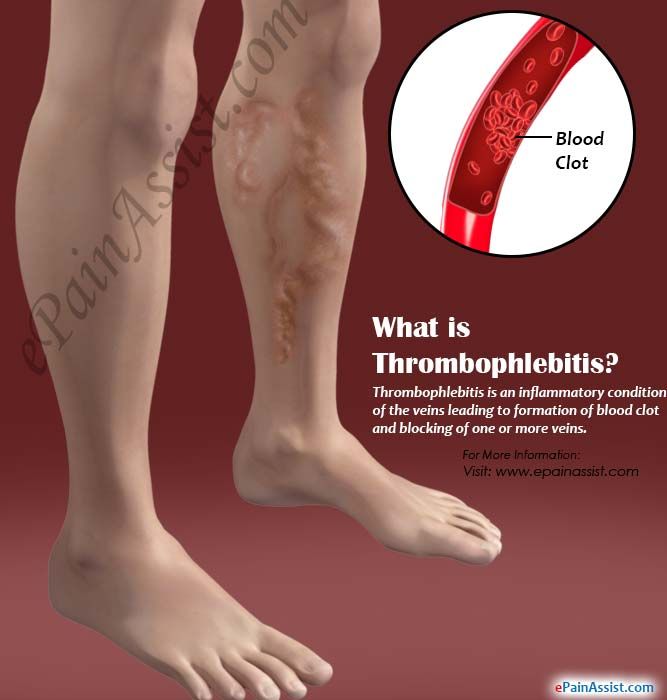 They keep blood clots from forming or getting bigger. They’re used to treat some types of heart disease and heart defects, along with other conditions that could raise your risk of forming dangerous clots.
They keep blood clots from forming or getting bigger. They’re used to treat some types of heart disease and heart defects, along with other conditions that could raise your risk of forming dangerous clots.
These drugs help protect against heart attacks and strokes. But they also come with risks: For example, they’ll cause you to bleed more than usual if you cut yourself.
The lifesaving benefits of these drugs often outweigh the potential dangers. But it’s important to learn about both before you start taking them.
There are two. The first is called anticoagulants. These keep your blood from clotting or turning into solid clumps of cells that stick together. Most come in pill form, but some are given as a shot or as an IV through one of your veins. Some of the more widely known anticoagulants include:
- Apixaban (Eliquis)
- Dabigatran(Pradaxa)
- Dalteparin(Fragmin)
- Edoxaban (Savaysa)
- Enoxaparin (Lovenox)
- Fondaparinux(Arixtra)
- Heparin (Innohep)
- Rivaroxaban (Xarelto)
- Warfarin (Coumadin, Jantoven)
The second class of blood thinners is called antiplatelets. These target tiny particles in the blood called platelets. They come in pill form and include:
These target tiny particles in the blood called platelets. They come in pill form and include:
- Aspirin
- Cilostazol
- Clopidogrel (Plavix)
- Dipyridamole (Persantine)
- Eptifibatide (Integrilin)
- Prasugrel (Effient)
- Ticagrelor (Brilinta)
- Tirofiban (Aggrastat)
- Vorapaxar (Zontivity)
Blood thinners don’t actually make your blood thinner. Nor can they break up clots. But they do keep new clots from forming. They can also slow the growth of existing ones.
Some anticoagulants do this by competing with vitamin K from the liver. Your body needs this to make proteins called clotting factors. These help blood cells and platelets (tiny pieces of blood cells) bind together.
Antiplatelets keep platelets from sticking to each other and to the walls of blood vessels, forming clots. These drugs are weaker than anticoagulants. They’re often prescribed to people at risk for future blood clots, rather than to treat existing ones.
About 2 million to 3 million people take blood thinners every year. You may need them if you’ve already had a heart attack or a stroke, since they can lower your risk of having a second one.
You may also need blood thinners if you have a heart or blood vessel disease, an irregular heart rhythm, lupus, or deep vein thrombosis (DVT). That’s a dangerous type of blood clot that often forms in the leg. Your risk of getting blood clots is also higher if you’re overweight, you’ve recently had surgery, or you have an artificial heart valve.
Some people only need blood thinners for a few months. But if you have ongoing health problems, you may need to take them long-term.
Clotting isn’t always a bad thing. When you cut yourself, that’s what seals your wound and keeps you from losing too much blood. But blood thinners prevent clotting. So even tiny cuts or bruises will bleed a lot more if you take these drugs.
You should be very careful when taking part in activities that could cause any type of injury.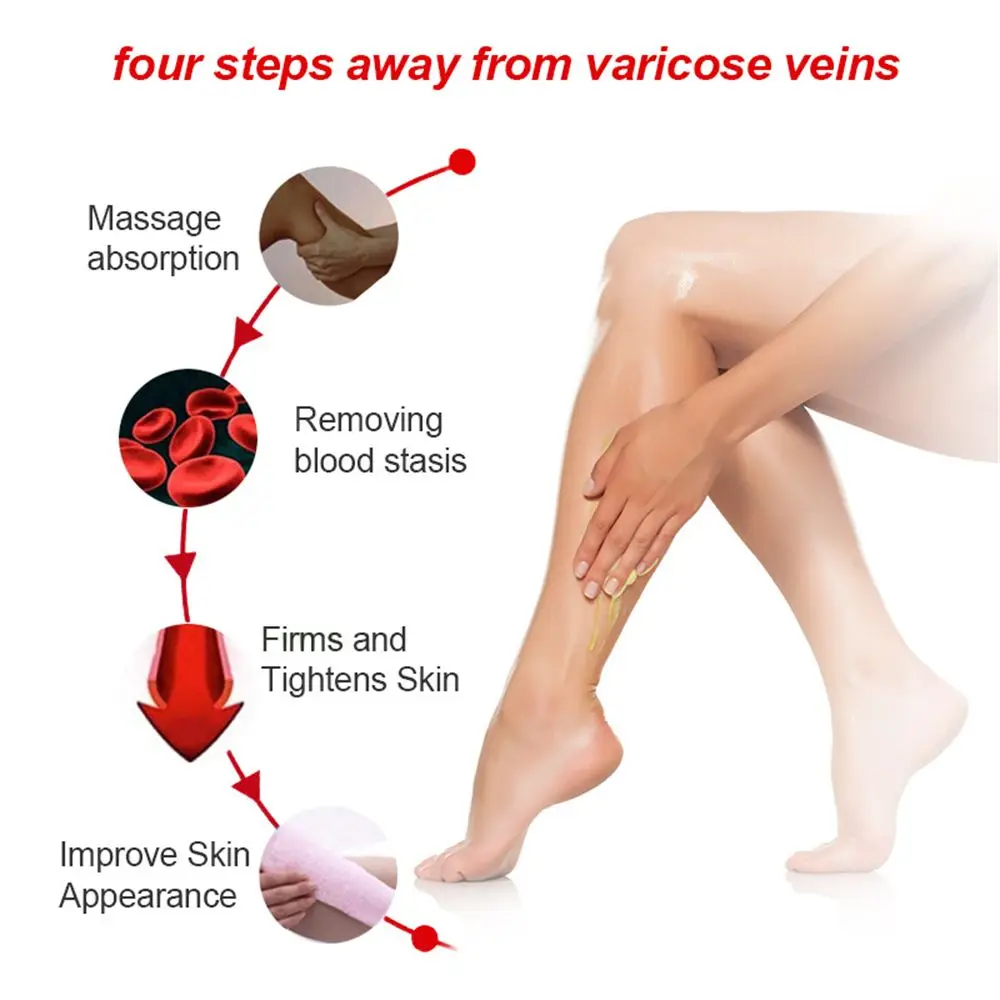 Call your doctor right away if you fall or hit your head. Even if you don’t tear your skin, you could bleed internally.
Call your doctor right away if you fall or hit your head. Even if you don’t tear your skin, you could bleed internally.
Let your doctor know right away if you notice any signs of unusual bleeding, like:
- Heavier-than-normal menstrual periods
- Blood in your pee or poop
- Bleeding from your gums or nose
- Vomiting or coughing up blood
- Dizziness
- Weaknesses
- A severe headache or stomachache
You may lose bone strength if you take heparin for a long time. This raises your chances of breaking a bone. Another serious, but less common, side effect of warfarin is necrosis. That’s when your skin starts to die.
If you take an anticoagulant like warfarin, you’ll need regular blood tests so your doctor can adjust your levels if needed. Ask them about other steps you should take to stay safe while you’re on this medication.
If you get a dangerous bleeding problem while taking warfarin, doctors can turn to an “antidote” of vitamin K or a combination of prothrombin complex concentrate (PCC) and fresh frozen plasma to stop it. In addition, approval has been given for using a reversal agent like andexanet alfa (Andexxa) to reverse the anti-clotting effects of apixaban (Eliquis) and rivaroxaban (Xarelto), or idarucizumab (Praxbind) to reverse the anti-clotting effects of dabigatran etexilate (Pradaxa) in emergencies.
In addition, approval has been given for using a reversal agent like andexanet alfa (Andexxa) to reverse the anti-clotting effects of apixaban (Eliquis) and rivaroxaban (Xarelto), or idarucizumab (Praxbind) to reverse the anti-clotting effects of dabigatran etexilate (Pradaxa) in emergencies.
Other medicines and supplements, including over-the-counter ones, can interfere with these drugs. Tell all of your doctors, including your dentist, that you’re taking a blood thinner. Don’t start any new medicines without their OK.
And remember that what you eat is also very important. Some foods – like green, leafy vegetables – contain vitamin K. This can counteract blood thinners. Ask your doctor if you’re not sure a certain food or drink is safe.
Get your blood checked often if you’re on warfarin or heparin. This is an international normalized ratio (INR) test. It tells you how long it takes your blood to clot.
You can also try to stop uncontrollable bleeding before it starts. Here are a few tips:
Here are a few tips:
- Use a soft toothbrush and waxed dental floss.
- Use an electric razor.
- Don’t trim corns or calluses.
- Wear gloves when you do yard work or use sharp tools.
- Wear a helmet when bike riding.
- Do low-impact sports like walking or swimming.
Other tips include:
Pay attention to how much vitamin K you’re getting. It helps your blood clot. But too much can stop warfarin from working. Talk to your doctor to find the right balance.
Don’t drink too much alcohol. This raises your risk of bleeding. One to two drinks a day is a safe amount.
Tell peopleyou’re on a blood thinner. Wear a medical alert bracelet or carry a card with your medications on it. Make sure your doctor, dentist, and other health care providers know. Tell them if you also take herbal supplements or vitamins.
Call your doctor right away if you have any of these symptoms. You may have a blood clot. They include:
You may have a blood clot. They include:
- Blurred vision
- Chest pain
- Severe weakness or dizziness
- Tingly hands, feet, or face
- Can’t move
- Swollen or red arms, calves, or feet
Some are considered safe to take during pregnancy. Others aren’t. Talk to your doctor if you’re on blood thinners and thinking about having a baby. They’ll let you know the next steps. If you’re already pregnant, double check with your doctor to make sure the blood thinner you’re on won’t harm the baby.
Top Picks
what it is, treatment, symptoms, signs, causes, diagnosis
Dermatologist-venereologist deals with the treatment of this disease
The information provided on this page should not be used for self-treatment or self-diagnosis.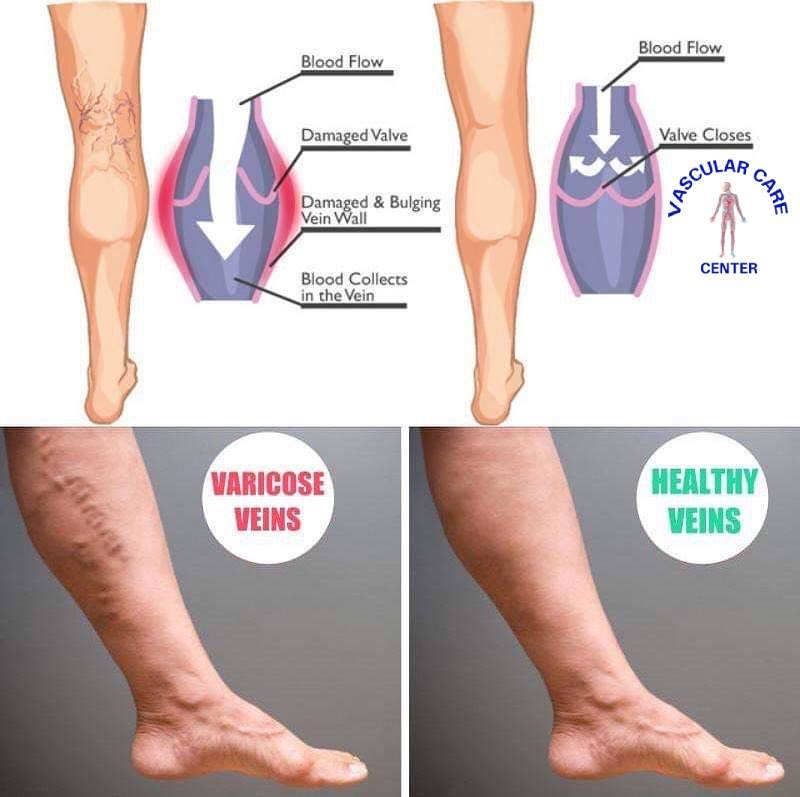 If you suspect a disease, you should seek help from a qualified specialist. Only your doctor can diagnose and prescribe treatment.
If you suspect a disease, you should seek help from a qualified specialist. Only your doctor can diagnose and prescribe treatment.
Article content:
- Causes
- Classification
- Symptoms of venous phlebitis
- Diagnostics
- Treatment of phlebitis
- Prophylaxis
- Complications
What is phlebitis?
Phlebitis is an inflammation of the venous wall. Most often, the disease is a consequence of varicose veins of the legs. It can occur in acute or chronic form. Pathology is rarely isolated.
As a result of inflammation, changes occur in the venous wall, which, if left untreated, lead to the formation of blood clots and the development of thrombophlebitis. To diagnose the disease to the doctor of the medical clinic, instrumental methods such as duplex scanning and ultrasound scan help. How to cure the disease? Clinical recommendations include physiotherapy and anti-inflammatory drugs.
Causes
The main reasons for the development of this pathological condition are:
1. Varicose veins.
2. Infections. The development of the disease can provoke viruses, bacteria, fungi. The most common causative agent is streptococcus. This is an opportunistic pathogen that is normally always present in the human body in small quantities. But with a decrease in immunity and the presence of optimal conditions, the bacterium begins to multiply intensively, provoking inflammation.
3. Allergic reaction.
4. Chemical or physical factors. An inflammatory reaction may occur in response to the introduction of the drug into the vein or be the result of an incorrect puncture when taking blood for analysis.
5. Pregnancy, difficult childbirth. During pregnancy, the vessels in the lower abdomen are compressed by the fetus, which leads to the development of congestion and can cause inflammation of the vein. During childbirth, a woman pushes hard, the pressure in the vessels increases, which can lead to damage and inflammation.
6. Other reasons. Inflammation can be provoked by a sedentary lifestyle, increased physical activity, obesity, bad habits, prolonged fixation of a limb in a fixed position in case of fractures Source:
Thrombophlebitis (superficial vein thrombosis): modern standards for diagnosis and treatment. Bogachev V.Yu., Boldin B.V., Jenina O.V., Lobanov V.N. Stationary-replacing technologies: Ambulatory Surgery, 2016. pp.16-23.
Depending on the etiology, the following types of phlebitis are distinguished:
1. Against the background of varicose veins.
2. Not associated with varicose veins:
- allergic – is a consequence of the pathological reaction of the veins to the allergen;
- post-injection – occurs due to mechanical injury or irritation of the vessel wall by the injected chemical, accompanied by hyperemia and pain at the site of inflammation.
The following types of phlebitis are distinguished by localization:
- penis;
- portal vein;
- hand veins;
- cerebral;
- migratory.

In addition, the following forms of phlebitis are distinguished:
- primary – the inflammatory process begins directly in the veins;
- secondary – systemic inflammation, usually caused by pathogenic microflora.
According to the location in the vein, the following forms of the disease are distinguished:
- periphlebitis – inflamed outer shell;
- endophlebitis – the inner shell is affected;
- panphlebitis – all the membranes of the veins become inflamed.
Symptoms of venous phlebitis
What does phlebitis look like? Clinical signs of the disease depend on its type and form.
When the superficial veins are affected, the following clinical picture is observed:
- the affected vein becomes very painful, tense;
- red stripes appear on the skin along the course of the vessel;
- the skin in the lesion is hot, red, indurated.
Acute and chronic inflammation of deep veins are manifested by the following clinical signs:
- edema, pain in the foci of inflammation;
- general increase in body temperature of the patient;
- milky white skin tone.

The following symptoms are observed in case of damage to cerebral vessels:
- increased pressure;
- headaches of various localization;
- neurological syndrome.
Diagnosis
A preliminary diagnosis is made at the first appointment, based on the patient’s questioning and examination. Additional examinations may be prescribed for its confirmation and differential diagnosis:
- blood tests;
- USDG of affected veins;
- duplex scanning of arteries and veins of extremities.
Based on the results of these studies, a final diagnosis is made, pathologies with similar symptoms are excluded, the causes of the disease and the exact localization of the inflammatory process are established.
Treatment of phlebitis
How to treat phlebitis? The doctor develops a therapy regimen individually for each patient, depending on the cause of inflammation, the severity of the pathological process, age, and characteristics of the patient’s body.
The following groups of drugs are most often prescribed:
- NSAIDs;
- antihistamines;
- blood thinners;
- vein health products;
- analgesics;
- anti-clotting agents;
- antibacterial preparations.
External treatment includes the use of special anti-inflammatory ointments. If the disease occurs after unsuccessful injections, then various ointment and alcohol dressings are used as auxiliary medicines. Physiotherapy techniques give a good effect.
Most of the patients are treated at home, only people with severe forms are admitted to the hospital. The affected limb must be kept calm. It is recommended to wear elastic bandages, compression stockings. In some forms of the disease, symptomatic drug therapy is performed, which includes taking NSAIDs and applying compresses to the affected areas to relieve inflammation and pain, prevent complications and exacerbations.
How is pathology treated if conservative therapy fails? Surgical intervention is rarely required, in extreme cases. Most often, these are emergency operations for the intersection and ligation of the saphenous vein, the planned removal of an irreversibly changed vein.
Most often, these are emergency operations for the intersection and ligation of the saphenous vein, the planned removal of an irreversibly changed vein.
If, after an unsuccessful injection, purulent inflammation occurs, as well as with severe damage to deep veins, the development of thrombophlebitis is also indicated for surgical intervention. Source:
Standard of care for patients with phlebitis and thrombophlebitis. Problems of standardization in health care No. 7, 2007. pp. 46-51.
COSMETOLOGY HARDWARE IN THE CM-CLINIC
• InMode multifunctional platform from the Israeli company INMODE Aesthetic Solution combines RF, laser and IPL technologies. Multiple nozzles allow you to achieve a variety of results – from the elimination of age spots and blood vessels to intimate rejuvenation and weight correction.
• HELEO (Photodynamic Therapy) is a cosmetic procedure that allows you to solve many skin problems, such as acne, post-acne, hyperpigmentation, fine wrinkles and others. During it, the healing and healing potential of light waves is used.
During it, the healing and healing potential of light waves is used.
• NeoGen is the latest equipment for skin treatment and rejuvenation using nitrogen plasma. It is patented and has no analogues in the world, thanks to which it is successfully used in the correction of many aesthetic problems, such as plasma rejuvenation, lifting, scar correction, acne, rosacea, dermatitis, fungal infections and others.
Prevention
0003
- proper nutrition;
- giving up a sedentary lifestyle;
- regular sanitation of foci of chronic infection in the body;
- strengthening of immune protection;
- quitting smoking, alcohol abuse, drugs;
- physical education classes;
- prevention of influenza and SARS;
- regular preventive examinations will help to identify possible pathological changes at an early stage, which will greatly facilitate treatment and improve the prognosis.
Complications
Inflammatory process in the veins reduces the patient’s quality of life, as pain causes limitation of mobility.
If untreated, the following complications may develop:
- abscess;
- thrombosis, thrombophlebitis;
- chronic venous insufficiency;
- blockage by a pulmonary artery thrombus.
The most dangerous complication is venous thrombosis. The likelihood of its development increases with age. If you do not help a person in time, then a blood clot can come off, clog the lumen of a large vessel, which can cause death.
- Thrombophlebitis (superficial vein thrombosis): current standards for diagnosis and treatment. Bogachev V.Yu., Boldin B.V., Jenina O.V., Lobanov V.N. Hospital-replacing technologies: Ambulatory surgery, 2016. p.16-23
- Standard of care for patients with phlebitis and thrombophlebitis. Problems of standardization in health care №7, 2007. p.46-51
Article published on : 09/02/2016
Last updated : 02/01/2023
See also
Phlebopathy
Ichthyosis
Athlete’s groin
what it is, treatment, symptoms, signs, causes, diagnosis
Dermatologist-venereologist deals with the treatment of this disease
The information provided on this page should not be used for self-treatment or self-diagnosis. If you suspect a disease, you should seek help from a qualified specialist. Only your doctor can diagnose and prescribe treatment.
If you suspect a disease, you should seek help from a qualified specialist. Only your doctor can diagnose and prescribe treatment.
Article content:
- Causes
- Classification
- Symptoms of venous phlebitis
- Diagnostics
- Treatment of phlebitis
- Prevention
- Complications
What is phlebitis?
Phlebitis is an inflammation of the venous wall. Most often, the disease is a consequence of varicose veins of the legs. It can occur in acute or chronic form. Pathology is rarely isolated.
As a result of inflammation, changes occur in the venous wall, which, if left untreated, lead to the formation of blood clots and the development of thrombophlebitis. To diagnose the disease to the doctor of the medical clinic, instrumental methods such as duplex scanning and ultrasound scan help. How to cure the disease? Clinical recommendations include physiotherapy and anti-inflammatory drugs.
Causes
The main reasons for the development of this pathological condition are:
1. Varicose veins.
2. Infections. The development of the disease can provoke viruses, bacteria, fungi. The most common causative agent is streptococcus. This is an opportunistic pathogen that is normally always present in the human body in small quantities. But with a decrease in immunity and the presence of optimal conditions, the bacterium begins to multiply intensively, provoking inflammation.
3. Allergic reaction.
4. Chemical or physical factors. An inflammatory reaction may occur in response to the introduction of the drug into the vein or be the result of an incorrect puncture when taking blood for analysis.
5. Pregnancy, difficult childbirth. During pregnancy, the vessels in the lower abdomen are compressed by the fetus, which leads to the development of congestion and can cause inflammation of the vein. During childbirth, a woman pushes hard, the pressure in the vessels increases, which can lead to damage and inflammation.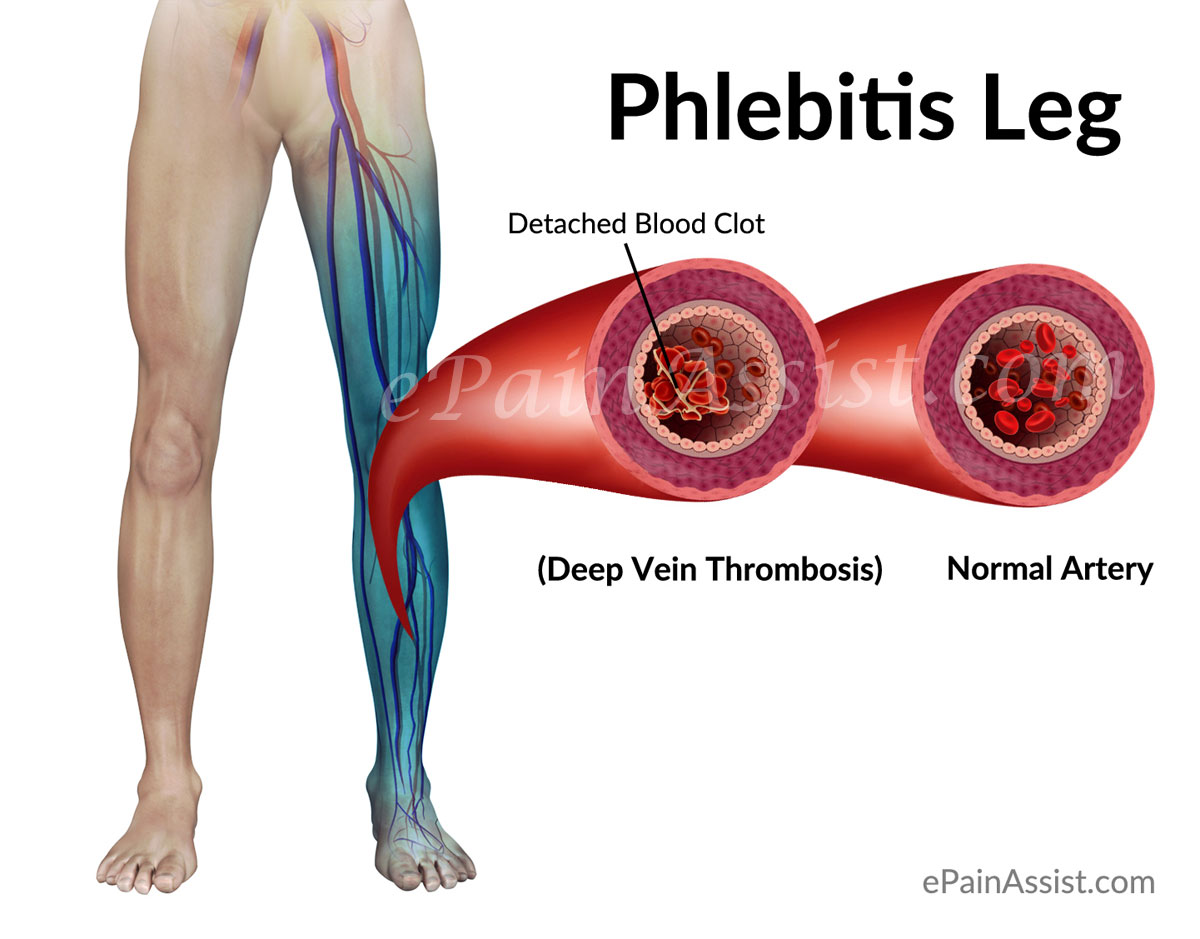
6. Other reasons. Inflammation can be provoked by a sedentary lifestyle, increased physical activity, obesity, bad habits, prolonged fixation of a limb in a fixed position in case of fractures Source:
Thrombophlebitis (superficial vein thrombosis): modern standards for diagnosis and treatment. Bogachev V.Yu., Boldin B.V., Jenina O.V., Lobanov V.N. Stationary-replacing technologies: Ambulatory Surgery, 2016. pp.16-23.
Depending on the etiology, the following types of phlebitis are distinguished:
1. Against the background of varicose veins.
2. Not associated with varicose veins:
- allergic – is a consequence of the pathological reaction of the veins to the allergen;
- post-injection – occurs due to mechanical injury or irritation of the vessel wall by the injected chemical, accompanied by hyperemia and pain at the site of inflammation.
The following types of phlebitis are distinguished by localization:
- penis;
- portal vein;
- hand veins;
- cerebral;
- migratory.

In addition, the following forms of phlebitis are distinguished:
- primary – the inflammatory process begins directly in the veins;
- secondary – systemic inflammation, usually caused by pathogenic microflora.
According to the location in the vein, the following forms of the disease are distinguished:
- periphlebitis – inflamed outer shell;
- endophlebitis – the inner shell is affected;
- panphlebitis – all the membranes of the veins become inflamed.
Symptoms of venous phlebitis
What does phlebitis look like? Clinical signs of the disease depend on its type and form.
When the superficial veins are affected, the following clinical picture is observed:
- the affected vein becomes very painful, tense;
- red stripes appear on the skin along the course of the vessel;
- the skin in the lesion is hot, red, indurated.
Acute and chronic inflammation of deep veins are manifested by the following clinical signs:
- edema, pain in the foci of inflammation;
- general increase in body temperature of the patient;
- milky white skin tone.

The following symptoms are observed in case of damage to cerebral vessels:
- increased pressure;
- headaches of various localization;
- neurological syndrome.
Diagnosis
A preliminary diagnosis is made at the first appointment, based on the patient’s questioning and examination. Additional examinations may be prescribed for its confirmation and differential diagnosis:
- blood tests;
- USDG of affected veins;
- duplex scanning of arteries and veins of extremities.
Based on the results of these studies, a final diagnosis is made, pathologies with similar symptoms are excluded, the causes of the disease and the exact localization of the inflammatory process are established.
Treatment of phlebitis
How to treat phlebitis? The doctor develops a therapy regimen individually for each patient, depending on the cause of inflammation, the severity of the pathological process, age, and characteristics of the patient’s body.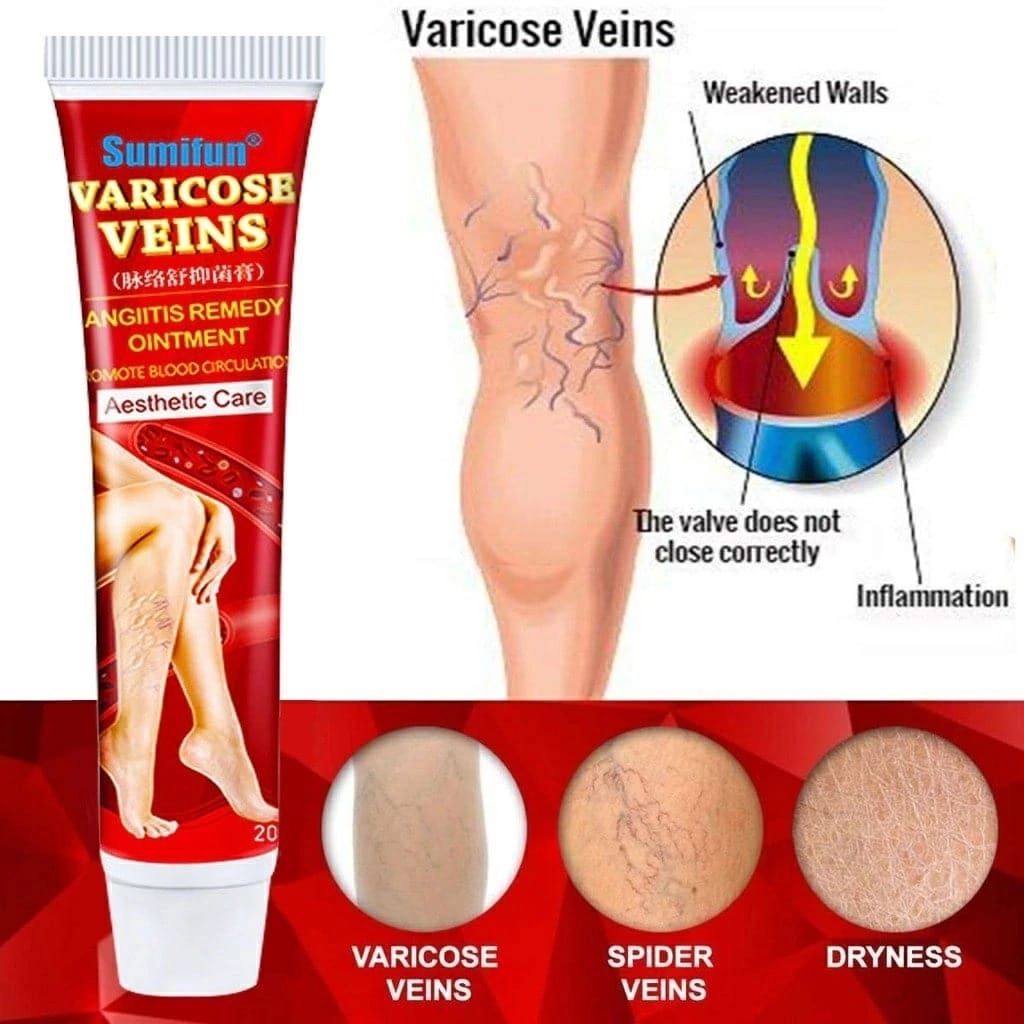
The following groups of drugs are most often prescribed:
- NSAIDs;
- antihistamines;
- blood thinners;
- vein health products;
- analgesics;
- anti-clotting agents;
- antibacterial preparations.
External treatment includes the use of special anti-inflammatory ointments. If the disease occurs after unsuccessful injections, then various ointment and alcohol dressings are used as auxiliary medicines. Physiotherapy techniques give a good effect.
Most of the patients are treated at home, only people with severe forms are admitted to the hospital. The affected limb must be kept calm. It is recommended to wear elastic bandages, compression stockings. In some forms of the disease, symptomatic drug therapy is performed, which includes taking NSAIDs and applying compresses to the affected areas to relieve inflammation and pain, prevent complications and exacerbations.
How is pathology treated if conservative therapy fails? Surgical intervention is rarely required, in extreme cases. Most often, these are emergency operations for the intersection and ligation of the saphenous vein, the planned removal of an irreversibly changed vein.
Most often, these are emergency operations for the intersection and ligation of the saphenous vein, the planned removal of an irreversibly changed vein.
If, after an unsuccessful injection, purulent inflammation occurs, as well as with severe damage to deep veins, the development of thrombophlebitis is also indicated for surgical intervention. Source:
Standard of care for patients with phlebitis and thrombophlebitis. Problems of standardization in health care No. 7, 2007. pp. 46-51.
COSMETOLOGY HARDWARE IN THE CM-CLINIC
• InMode multifunctional platform from the Israeli company INMODE Aesthetic Solution combines RF, laser and IPL technologies. Multiple nozzles allow you to achieve a variety of results – from the elimination of age spots and blood vessels to intimate rejuvenation and weight correction.
• HELEO (Photodynamic Therapy) is a cosmetic procedure that allows you to solve many skin problems, such as acne, post-acne, hyperpigmentation, fine wrinkles and others.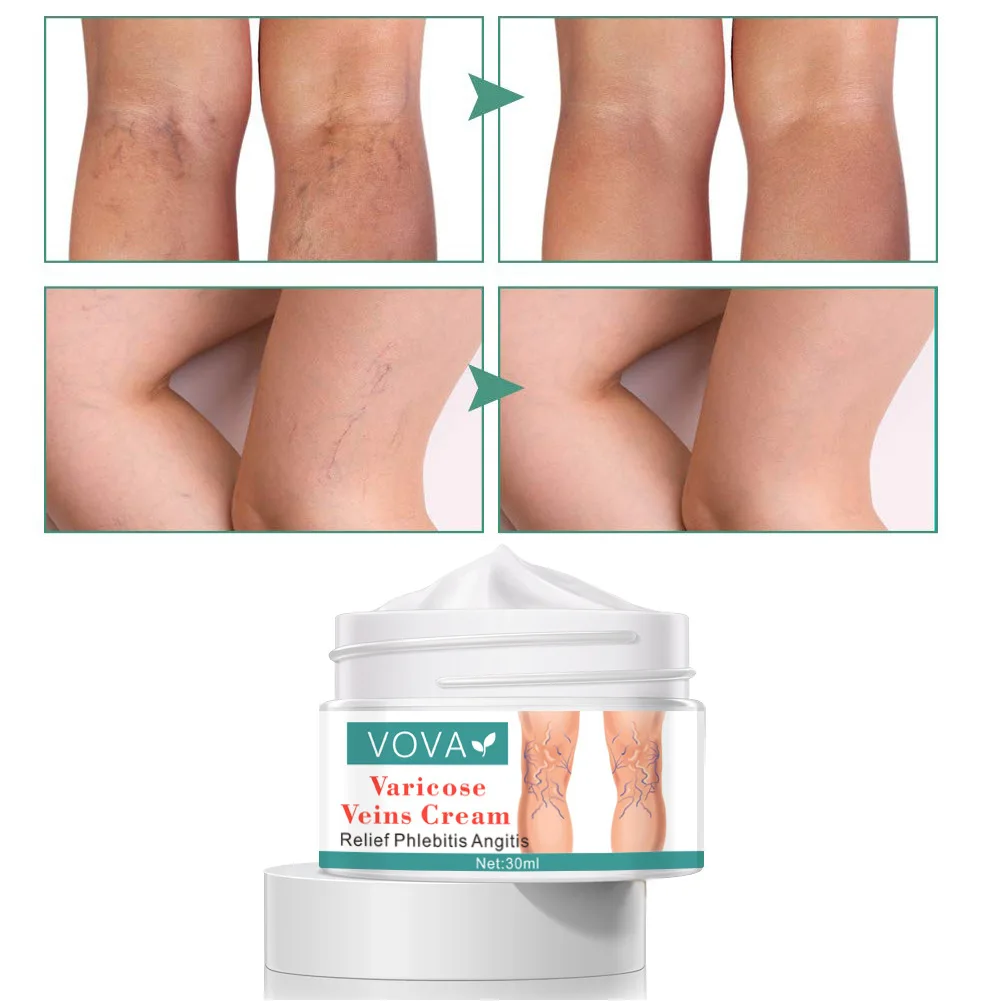 During it, the healing and healing potential of light waves is used.
During it, the healing and healing potential of light waves is used.
• NeoGen is the latest equipment for skin treatment and rejuvenation using nitrogen plasma. It is patented and has no analogues in the world, thanks to which it is successfully used in the correction of many aesthetic problems, such as plasma rejuvenation, lifting, scar correction, acne, rosacea, dermatitis, fungal infections and others.
Prevention
0003
- proper nutrition;
- giving up a sedentary lifestyle;
- regular sanitation of foci of chronic infection in the body;
- strengthening of immune protection;
- quitting smoking, alcohol abuse, drugs;
- physical education classes;
- prevention of influenza and SARS;
- regular preventive examinations will help to identify possible pathological changes at an early stage, which will greatly facilitate treatment and improve the prognosis.
Complications
Inflammatory process in the veins reduces the patient’s quality of life, as pain causes limitation of mobility.




